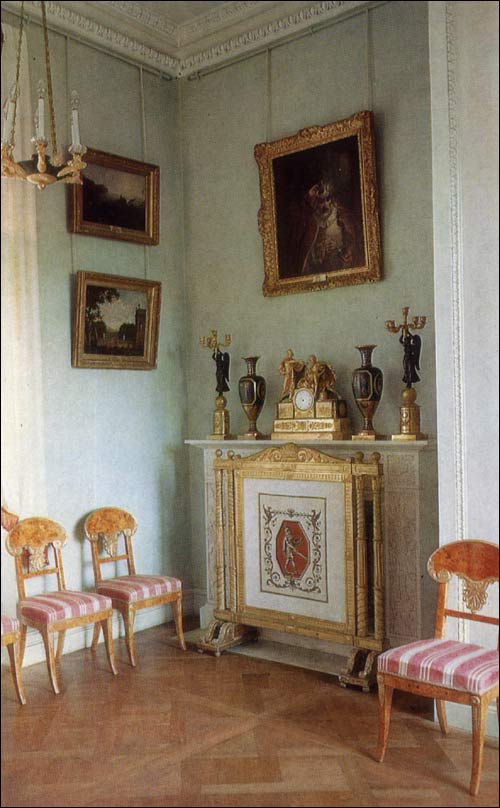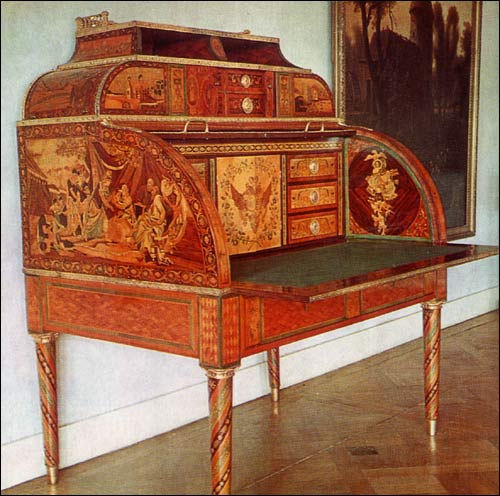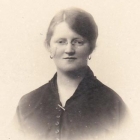People are always telling me that there is no way that you can find your Irish roots because all the records are lost. This article can help your search.

|


The Palace Library, created by Carlo Rossi in 1824, completes the suite of state apartments. It is reached from the northern range of rooms through a small, very simply decorated lobby, now known as The Rossi Room. Its furniture, made of poplar and ornamented with delicate gilded carvings from the sketches by. Rossi, came from one of the capital's best workshops. The decor was completed by paintings and bronzes (early nineteenth-century chandeliers, candelabra and a clock).
The Library used to contain over 20,000 volumes covering all fields of knowledge, as well as an important collection of drawings and sketches by the architects who built Pavlovsk. A considerable part of both the library and the collection has been preserved. With time, new bookcases and other equipment will be installed instead of those that perished in the fire. Only the architecture of the Library, and the painted ceiling, have so far been restored. At present the hall is used for temporary exhibitions of the palace art collections. The greatest treasure among the objects on display is a porcelain vase, one of the largest made in the eighteenth century at the St Petersburg Imperial Porcelain Factory. Its graceful shape, the rich tone of the cobalt blue, the beautiful moulded ornaments and the delicate gilding, all bear witness to the high skill of the factory's Russian craftsmen. A high level of craftsmanship distinguishes the large inlaid cylinder-top desk of Paul I. It is decorated with scenes of the life of Alexander the Great, views of Pavlovsk and delicate ornamentation which covers also the inner surfaces. This piece of furniture is the work of Matvey Veretennikov, a serf owned by Count Saltykov. The same master made the inlaid kidney table with a view of the Pavlovsk Park on the top, showing the Slavianka, and on its banks, the Palace, the Temple to Friendship and other structures which existed at the time.   |

|





